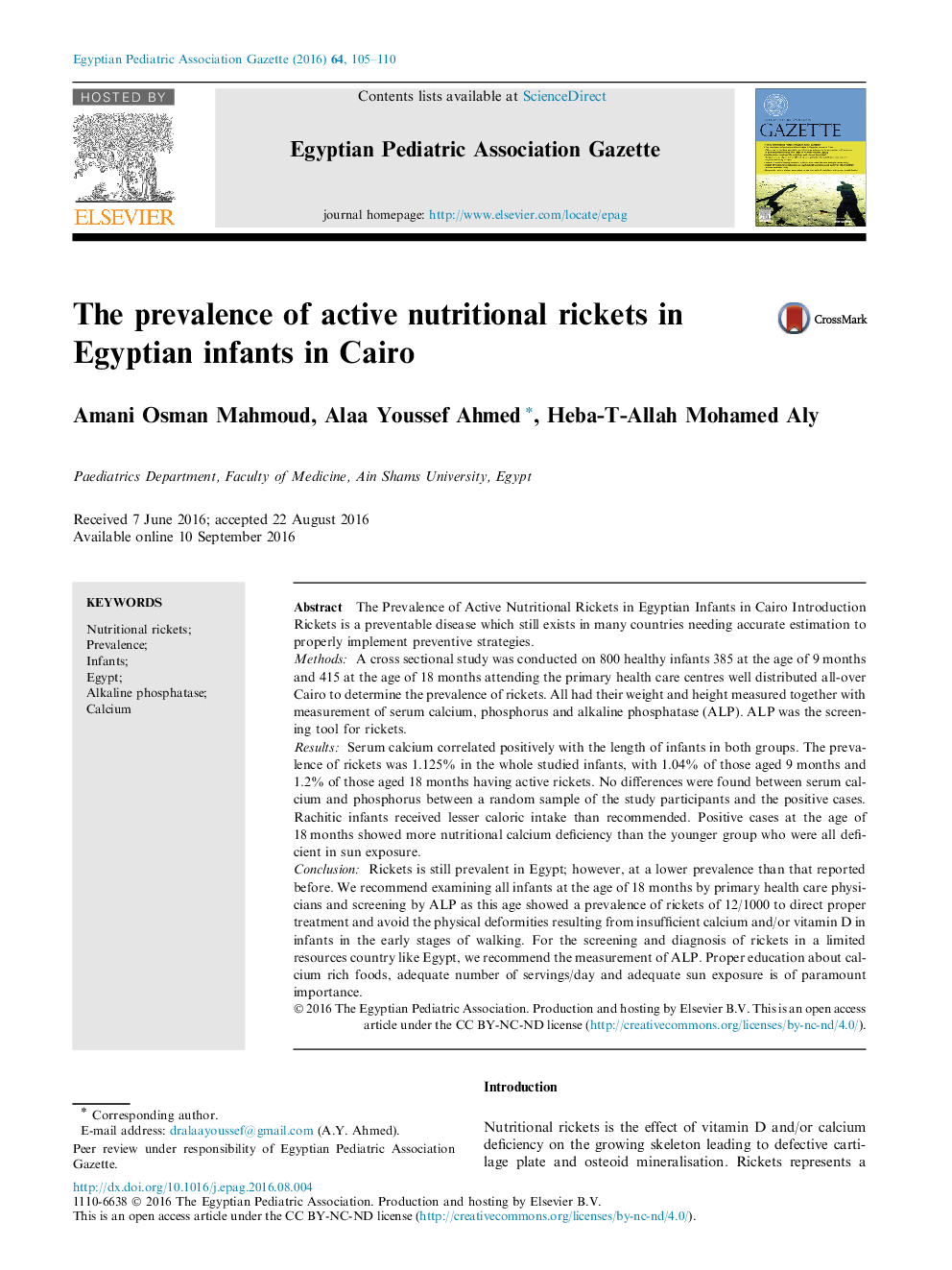| Article ID | Journal | Published Year | Pages | File Type |
|---|---|---|---|---|
| 4153552 | Egyptian Pediatric Association Gazette | 2016 | 6 Pages |
The Prevalence of Active Nutritional Rickets in Egyptian Infants in Cairo Introduction Rickets is a preventable disease which still exists in many countries needing accurate estimation to properly implement preventive strategies.MethodsA cross sectional study was conducted on 800 healthy infants 385 at the age of 9 months and 415 at the age of 18 months attending the primary health care centres well distributed all-over Cairo to determine the prevalence of rickets. All had their weight and height measured together with measurement of serum calcium, phosphorus and alkaline phosphatase (ALP). ALP was the screening tool for rickets.ResultsSerum calcium correlated positively with the length of infants in both groups. The prevalence of rickets was 1.125% in the whole studied infants, with 1.04% of those aged 9 months and 1.2% of those aged 18 months having active rickets. No differences were found between serum calcium and phosphorus between a random sample of the study participants and the positive cases. Rachitic infants received lesser caloric intake than recommended. Positive cases at the age of 18 months showed more nutritional calcium deficiency than the younger group who were all deficient in sun exposure.ConclusionRickets is still prevalent in Egypt; however, at a lower prevalence than that reported before. We recommend examining all infants at the age of 18 months by primary health care physicians and screening by ALP as this age showed a prevalence of rickets of 12/1000 to direct proper treatment and avoid the physical deformities resulting from insufficient calcium and/or vitamin D in infants in the early stages of walking. For the screening and diagnosis of rickets in a limited resources country like Egypt, we recommend the measurement of ALP. Proper education about calcium rich foods, adequate number of servings/day and adequate sun exposure is of paramount importance.
